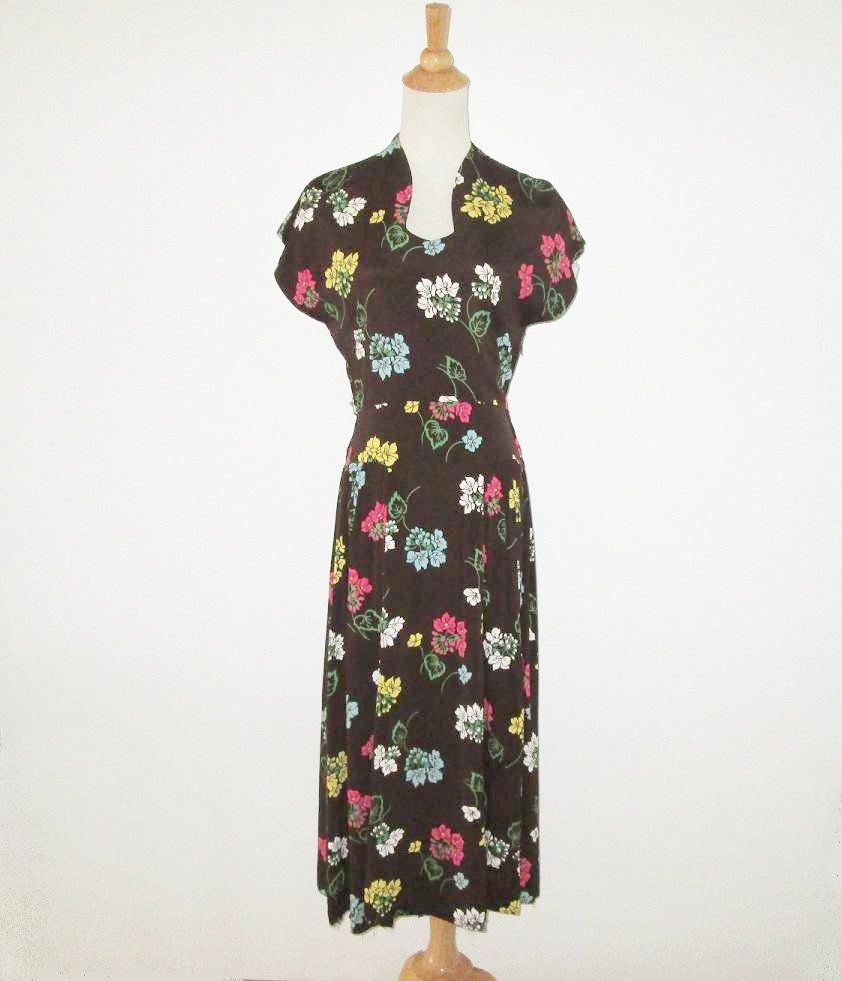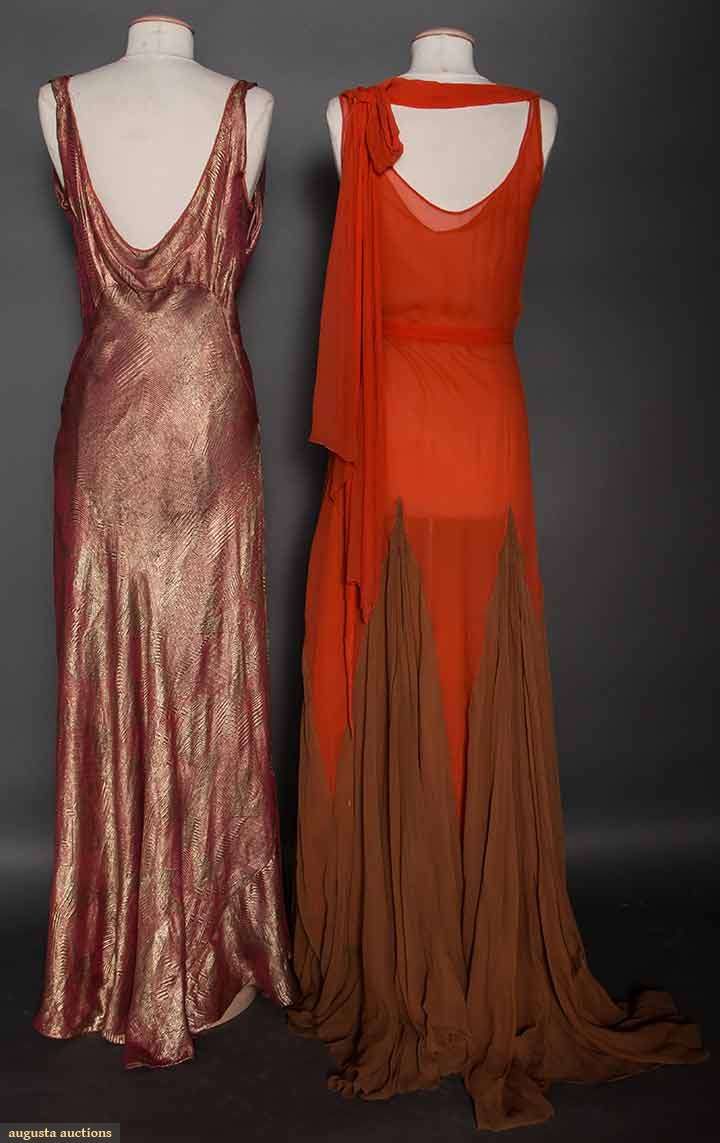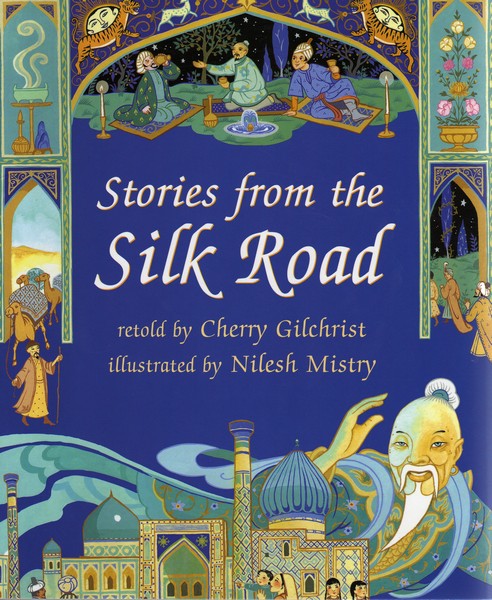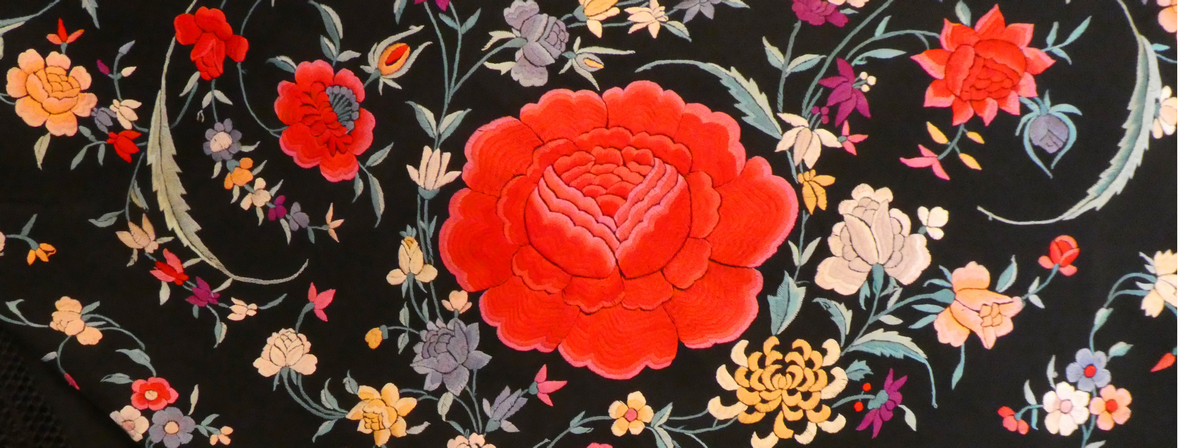
Tales from Tigerlily no. 3
This is the third in a series of stories from my vintage clothes shop, Tigerlily, which I ran from 1974 to1979 on Mill Road, Cambridge (at the town end, before the railway bridge, for those in the know about the two parts of Mill Road). We were a destination!
I’ve already described how I bought bin bags of stock from the rag mills, and the next post will be about the street markets I frequented too, but for this account, I’ll reveal how Tigerlily sourced stock in a far more upmarket manner – at the ‘posh end’ of the trade.
Finding Tigerlily treasures at ‘the posh’ end
At that time in the ‘70s, the term ‘vintage’ hadn’t been coined for clothes. Even using ‘period’ was a novelty, and most older clothes were considered only fit for throwing away. In the frugal decades earlier in the century, the majority of people had much smaller wardrobes and couldn’t afford new clothes on a whim, or because fashion dictated. However, at the other end of the scale ‘period costume’ meant couture items and their accessories which might prized as heirlooms, such as hand-made lace, exquisite embroidery, and silk or chiffon evening gowns. Such items rarely turned up in the kind of places where I was searching for stock – rag mills, street markets and jumble sales. But then I discovered that there were some collectable ‘antique’ clothes and textiles which could be within my reach. And the key places to find these happened to be at the high-class auctions in London.
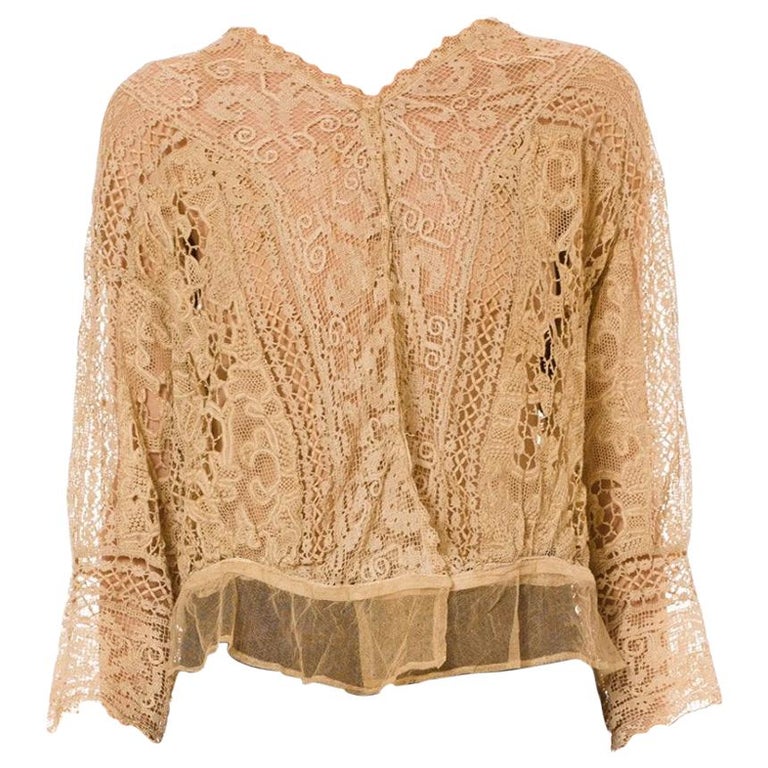
So off I went to discover the delights and perils of buying at auctions run by Phillips and by Bonham’s, both household names in the world of fine art and antiques. It was an eye-opener. On the pre-sale viewing days, I marvelled at the wonders which were hung quite casually on clothes rails, or folded in old trunks and boxes. There were silk shawls, Edwardian blouses, and slinky silver lame evening dresses. I recall too pleated Fortuny dresses, original William Morris curtains, a set of antique Tibetan Temple hangings, and glorious panne velvet opera cloaks, trimmed with swansdown. Some of these sold for huge prices, others for very little if they were not in mint condition. ‘Good enough’ condition meant that they might be within my price range.
Another feature of these ‘costume’ auctions was fine lace, the prime examples ready to be snapped up by specialist collectors. However, there were also ‘lots’ of lace which had no particular place in a museum or collector’s display, and were thus were more towards my end of the market. So I was sometimes able to buy large cardboard boxes full of lace trims, panels and collars. With the help of a book I acquired, I took a beginner’s crash course in learning the difference between hand and machine made lace, and between some specific types, such as Honiton or Venetian. The lace pieces sold very nicely in Tigerlily, for modest prices.

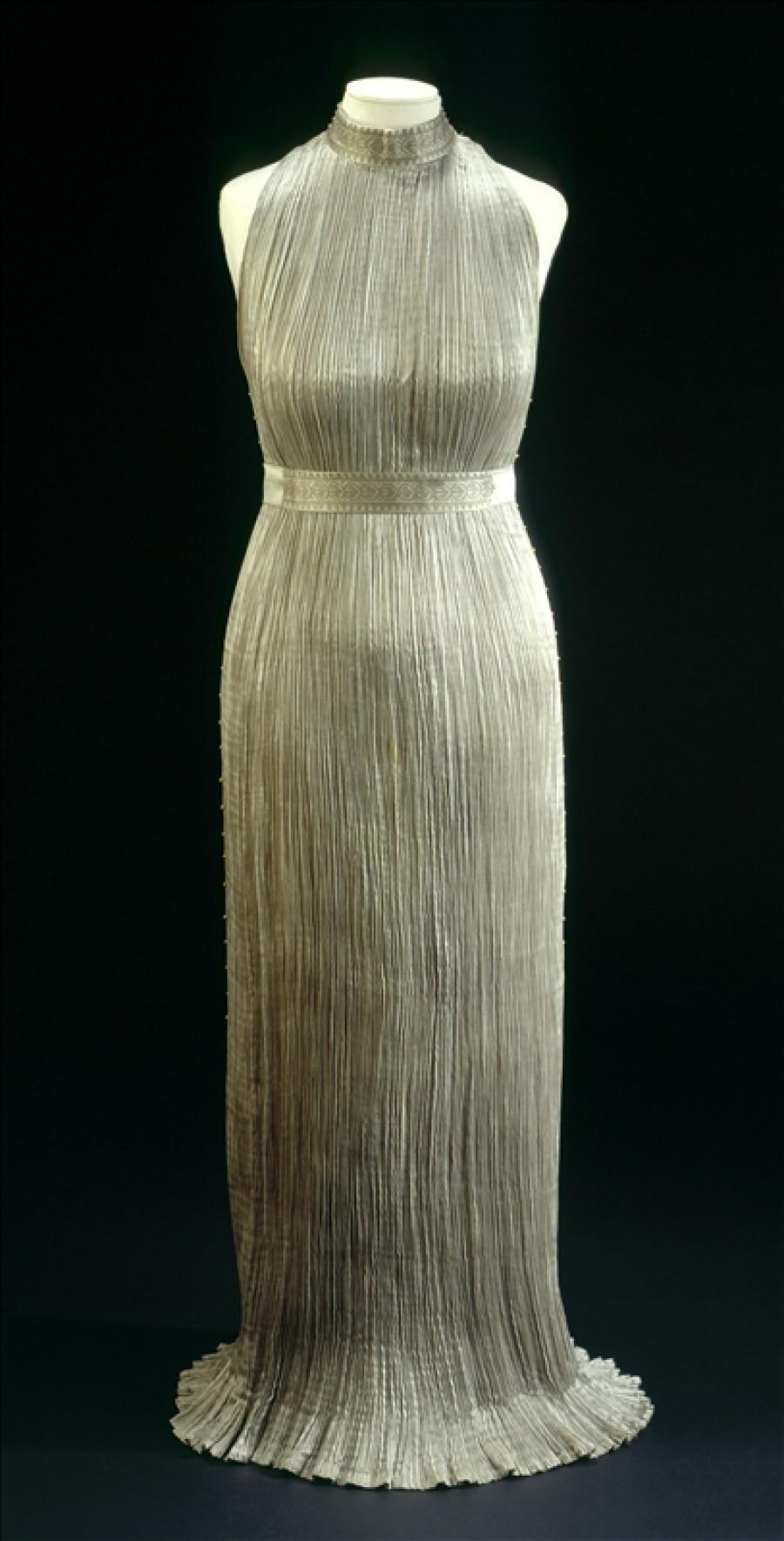
These gorgeous dresses above were in the iconic style of Mariano Fortuny – which typically sold for a fortune, both in the early part of the 20th century when he was working as a designer, and when they came up for auction decades later. Sadly, they were never within our budget. This quote describes the design:
‘Registered in Fortuny’s name in 1909, his emblematic ‘Delphos’ dress—named after the Charioteer of Delphi—took its inspiration from the chiton, the long woollen Greek tunic, and reflects the craze for Greece whose interpreter at the time was Isadora Duncan. This one-size-fits-all dress, made of finely pleated silk and open to all sorts of subtle variants of neckline and sleeves, was an ongoing success for forty years. Its admirers among the modernist elite included Comtesse Greffulhe and her daughter Elaine, the Marchesa Luisa Casati, Sarah Bernhardt, Eleonora Duse and, of course, Isadora Duncan.’



Antique lace, of which these are examples, used to come my way in the job lots at the costume auctions. I was able eventually to identify most of the more common varieties. Machine-made lace curtains were also back in favour again. They lasted well, provided that they hadn’t been starched, which tended to rot the material over time.
The perils of lace, chiffon and silk
I also found some dresses and job lots of garments at auction which might have represented, say, the back end of a 1920s wardrobe, or even of a theatrical costume collection. These too went well in Tigerlily, with one notable exception. I’d purchased a large suitcase full of chiffon and silk dresses and nighties from the 20s and 30s, which no one else seemed interested in. They weren’t exceptional, but they were fun, and wearable, with a touch of glamour to them. I priced them up, and started to put them out in the shop, a few at a time.
However, a couple of weeks later, I reached into the box to see what was left, and to my horror, the fabric of a dress literally fell apart in my hand! I pulled out others – they virtually crumbled as I touched them. I realised that whoever had kept the collection hadn’t opened it up for years, and now, as the air began to reach the textiles, they were disappearing like fairy gold in the daylight.
Later that day, a young woman came into the shop, looking anxious, clutching one of our brown paper bags.
‘I bought this dress last week,’ she said, ‘but look at it now!’
I knew what was coming, before she held up the garment, now in shreds. Once a chiffon 20s shift, it was now not even suitable to use as a duster.
‘I wouldn’t mind,’ she continued earnestly, ‘if I’d worn it a few times, but it was only the once!’
I hastened to put her out of her misery, and refunded her money with an apology and an explanation. After all, we didn’t want to get the reputation of a shop whose clothes fall apart after a first wearing.
A flirtation with ‘The Lady’ and Victorian underwear
Another strategy I used at the posh end was to put advertisements in magazines like Vogue and The Lady. They carried ads for ‘dress agencies’ at the time, where, I supposed, impoverished gentlefolk could sell off last year’s ball gown or suit they’d worn to a Royal Garden Party. So my ads were a little different, as I asked for antique or period clothing. Extraordinarily, it worked, and people started contacting me. We would exchange letters or phone calls first to try and establish if what they had to offer was potentially of interest, and if what I could offer financially would be acceptable. Then boxes would arrive by post, if the location was too far away for me to visit. Occasionally, I had to send back a box of unwearable items, but on the whole the surprises were pleasant ones. One in particular was a set of exquisitely stitched and embroidered white cotton lawn underwear and nightdresses, a never-worn trousseau for an Edwardian bride. What was the story there? I was bowled over, and sent the seller a price she was both astonished and pleased to receive. She was so pleased, in fact, that she sent me more!

There were the ones that got away, however – I arranged to meet one lady at a Cambridge bus stop in the rain to see her treasures. (Why? Perhaps she was just changing buses and couldn’t come any further? I can’t recall.) She opened a ancient cardboard dress box and revealed a perfect fully-beaded 1920s flapper dress in black-and-white geometric designs. It was accompanied by a matching Juliet cap (a skull-fitting cap rather like a bathing hat) in the same delicate fabric and beading. As soon as I saw it though, I realised that it was probably too good for me. It was really a museum or collectors piece, and we mainly sold pieces for wear by people with modest budgets. I couldn’t afford the price she wanted, and regretfully had to let it go. Could I, should I, have bought it? It would have been an investment, but I suppose there’s a chance that it too might have turned out like the box of vanishing fairy gold, and crumbled away. Many 1920s items of clothing were really very fragile, and didn’t stand the test of time. A Victorian cotton nightie can be good for 150 years, whereas a 20s flapper dress might not outlast the decade.

An old lady’s story
And sometimes, people brought items unbidden into the shop, to see if we wanted to buy them. That was fine, but they could cut up rough if politely refused. One woman brought in a dress she had bought new from a shop in London the day before, and decided she didn’t want. Not vintage – I’m talking about a ‘modern’ 1970s dress, expensive and rather ugly. She graciously offered me 10% off the price she’d paid, which would ensure there was ‘something in it’ for me. Thank you, but no thank you. She was indignant. She plainly didn’t realise that the average mark-up from buying a garment wholesale to selling it from the shop floor is 100%, so even if we had been interested, the discount was negligible. Even to this day, I think many people don’t realise that to cover overheads and make a modest living, many types of shop have to mark up their merchandise by doubling the wholesale price, then adding the VAT.
But there was also a wonderful surprise one day, when a very elderly lady came in, with something in a bag to show me. It was a Chinese silk shawl, heavily embroidered with coloured flowers on black silk, and a deep knotted fringe. I had long admired such shawls, but couldn’t afford the inflated prices they reached at the London auctions. When she saw I was interested, she told me she had other similar items at her home which was just around the corner from the shop. I made an appointment to visit with alacrity.


‘I was out in China, you see,’ she told me, when I went round. This had been between 1900 and 1920, when she was a glamorous young Englishwoman who attracted the eye of various handsome young men out there. ‘One of my suitors bought me some of these pieces. But I didn’t like him, so I never wore them.’
The items in question were not only the shawl, but a beautiful black silk trouser suit, embroidered with orange and white flowers, birds and fish. They were in pristine condition. She also had an unfinished square embroidery, lacking its fringe but perfect in every other respect, with immensely detailed scenes of Chinese life.
I bought everything, at a price we were both happy with. Some items I earmarked immediately for my own collection. Gradually, over the years, I disposed of my hoard, but these Chinese items are with me or my family for keeps! They are treasured, even if they can’t be out on permanent display. The fringed shawl tends to live in a drawer in case the cats claw it on the sofa. It’s also too awkward to wear, because the fringe can catch in your own and other people’s clothing – as I discovered to my embarrassment, striding grandly up the aisle of a cathedral to find my seat for a concert. The square embroidery, the shawl without a fringe, I’ve passed on to my daughter, and it’s now in safekeeping for my granddaughters.



The trouser suit I’ve worn on various occasions, not often, but enough for it to have gentle signs of wear. A few years ago, I wore the jacket to a Gala evening at our Exeter Northcott Theatre. In the social part of the evening, Robert and I got chatting to a couple who admired it. He was British, she Chinese. I was able to tell her, ‘Yes, it’s genuine Chinese embroidery, and it’s about a hundred years old.’
At that point, I felt like an antique myself. After all, the old lady, when she sold it to me, was vividly remembering the days of her youth, and now I’m remembering mine, and the time when I bought it. When does a life story turn into history?
Below: detail from the embroidered silk trouser suit


My Tigerlily dealings took me into some strange situations and up some curious pathways. It was an education, as well as a business. I still enjoy rubbing a piece of supposed vintage fabric through my fingers to detect whether it’s genuine 1930s satin, or a later revival piece, made of artificial fabric. The seams will tell me whether that so-called Victorian nightie is handsewn, or a later reproduction. The feel, as well as the eye, give the clues that you need to pick out a period pieces and appreciate its worth, not just in monetary terms but as a valuable link to costume history, and for the chance to continue its life story into the 21st century.








